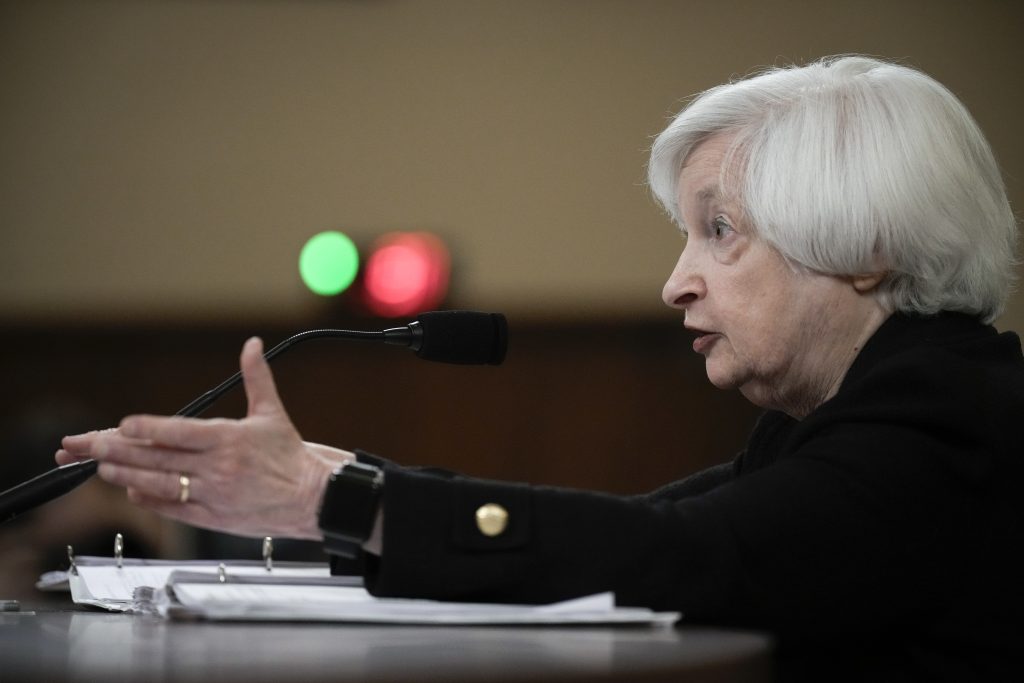Treasury Yields Plunge after Silicon Valley Bank Debacle
U.S. Treasury yields declined sharply on Monday, March 13 as investors and traders fled to the relative safety of U.S. government bonds amid the ongoing regional banking crisis

In the wake of the Silicon Valley Bank failure, investors and traders elected to duck and cover at the start of the March 13 trading week.
That was evidenced by the continued selloff in the financial services sector, as well as a surge in demand for U.S. government bonds. The emergence of those trends is undoubtedly linked to the list of early winners and losers from the recent regional bank failures.
On one hand, banking regulators in the United States elected to rescue depositors and make them completely whole—regardless of whether those deposits were insured by the Federal Deposit Insurance Corporation (FDIC). On the other hand, the government bailout did not extend to shareholders and bondholders in the failed financial institutions.
That was expressly stated in a joint statement released by the U.S. Treasury, Federal Reserve, and FDIC on March 12, which stated, “shareholders and certain unsecured debtholders will not be protected. Senior management has also been removed. Any losses to the Deposit Insurance Fund to support uninsured depositors will be recovered by a special assessment on banks, as required by law.”
That outcome helps explain why no further bank runs were reported to start the week. However, it may also help explain why investors and traders were racing to take risk off the table in the financial services sector on Monday. Right now, nobody wants to be left holding the bag if another regional bank (or two) goes belly up.
By the close of trading on Monday, the regional banking sector was so bloodied that even some of the sharks cruising the nation’s coastlines probably smelled the carnage. The worst performers from Monday are now starting to feel like a list of usual suspects, because many of them were also the worst performers from the week of March 6.
Some of the weakest performers from the financial services sector on March 13 are highlighted below:
- First Republic Bank (FRC), -61%
- Western Alliance Bancorporation (WAL), -47%
- Metropolitan Bank (MCB), -44%
- First Foundation (FFWM), -33%
- Comerica (CMA), -28%
- KeyCorp (KEY), -27%
- Zions Bancorp (ZION), -26%
- Customers Bancorp (CUBI), -24%
- Veritex Holdings (VBTX), -22%
- PacWest Bancorp (PACW), -21%
- First Horizon (FHN), -20%
- Seacoast Banking (SBCF), -20%
The major ETFs for the banking sector were also down significantly on Monday, with the SPDR S&P Regional Banking ETF (KRE), the iShares U.S. Regional Banks ETF (IAT), the Financial Select Sector SPDR Fund (XLF) and the Vanguard Financials ETF (VFH) all down 12%, 14%, 3% and 4%, respectively.
Other notable losers from Monday included Bank of America (BAC, -6%), Charles Schwab (SCHW, -11%,), Citigroup (C, -7%), Fifth Third Bancorp (FITB, -13%), U.S. Bancorp (USB, -10%) and Wells Fargo (WFC), -7%).
Treasury yields suffer historic plunge
In addition to the sharp selloff in the banking sector, the U.S. Treasury market also saw a sharp surge in trading interest.
Since the close of trading on Friday, March 10, the 10-year U.S. Treasury yield is down roughly 40 basis points, to 3.54%. However, the plunge in the 2-year Treasury yield was more extreme.
In the last three trading days, the yield on 2-year U.S. Treasury bonds has dropped from above 5%, all the way down to roughly 4.01%. That’s the steepest decline in the 2-year Treasury yield over a three-day trading period since Oct. 22, 1987.
As most market participants are well aware, Treasury yields share a strong positive correlation with interest rates. When interest rates are rising, so too are Treasury yields—and vice versa.
However, Treasury yields are unique because they are also subject to changes in supply and demand. During periods of uncertainty in the financial markets, Treasury bonds often experience a surge in demand.
In these instances, prices for Treasury bonds can rally in sharp fashion, while associated yields can plunge—as a result of the strong inverse correlation between Treasury prices and Treasury yields.
That’s why yields can make big moves even when benchmark interest rates remain unchanged. The precise scenario that played out over the last several trading days.
Interestingly, the spread between the 2-year and 10-year Treasuries also collapsed in the wake of the recent bank failures. Last week, the 2-year Treasury was trading as much as 109 basis points higher than the 10-year Treasury. Today, however, that same spread has shrunk to roughly 47 basis points (4.01% – 3.54% = 0.47%).
Prior to the Silicon Valley Bank situation, most were projecting that the Federal Reserve would increase benchmark rates by another half percentage point at its upcoming policy meeting on March 21-22.
However, the outcome of that meeting is now in question because leaders at the Federal Reserve may decide not to leave rates unchanged based on recent events (i.e. stress in the financial system).
That means Treasury yields could be a hot niche in the financial markets for the foreseeable future as investors and traders attempt to position ahead of the next Fed meeting.
To follow everything moving the markets, tune into tastylive, weekdays from 7 a.m. to 4 p.m. CDT. For more background on the relationship between Treasury bond prices and Treasury bond yields, check out this installment of Futures Measureson the tastylive financial network.
Sage Anderson is a pseudonym. He’s an experienced trader of equity derivatives and has managed volatility-based portfolios as a former prop trading firm employee. He’s not an employee of Luckbox, tastylive or any affiliated companies. Readers can direct questions about this blog or other trading-related subjects, to support@luckboxmagazine.com.



















